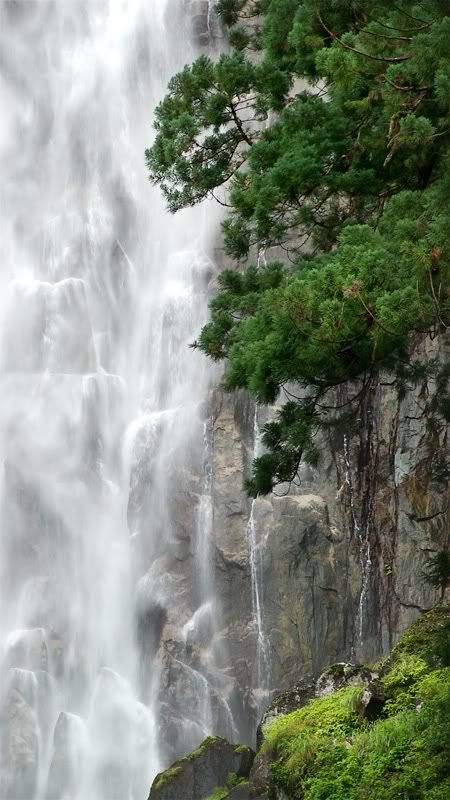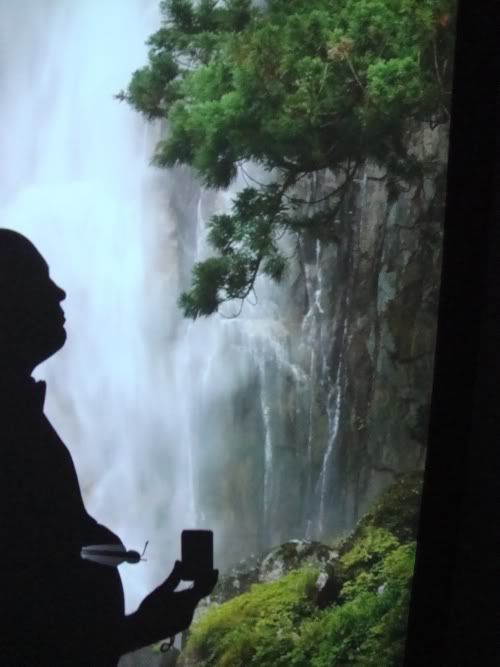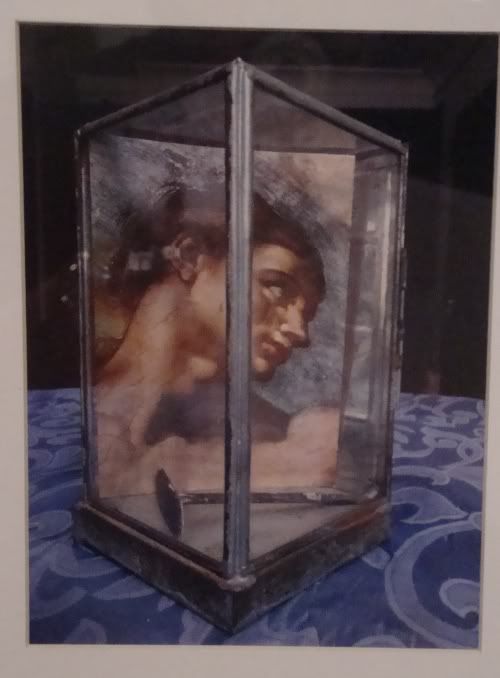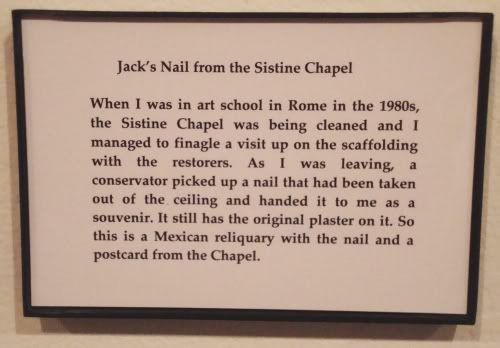
Jawshing Arthur Liou, Nachi, video installation, 2010
I've mentioned I get impatient with video art. I mean this literally. I'm a gallery and I just don't like to stand still to watch a video. Especially an art video--after all, they're likely to be pretty slow and rather obscure. They demand attention, and a gallery is a hard place to give them that attention. There's a reason they show movies in darkened rooms with comfortable seats.
But some video doesn't make any defined time commitment on the viewer. These videos are like still images, but moving. That definitely describes Nachi. Poissant has placed Nachi in the back of the gallery. You walk into a dark space and hear a brook running over rocks. You round a corner and see it (a video image) and hear it more loudly. You see another image of the brook, and a distant roar. Finally, you turn another corner, and there is a wall-sized video of a waterfall, roaring loudly. This is what I mean by a still image that is moving. While you see the water tumbling down and full of violent movement, the overall image never changes.
Liou is trying with sound and video image to recreate the experience of seeing this truly majestic waterfall. In order to recreate the sensation that you are hiking ever closer to the falls, he uses motion-detectors to adjust the volume of the various sounds as you walk through the installation. The video images get successively larger. It's an old-fashioned ambition--Liou seems to be going for the sublime. He is using modern techniques to produce in a viewer the same feelings that were produced in the 19th century when they saw the paintings of Frederick Church.

Jawshing Arthur Liou, Nachi (with my shadow), video installation, 2010
I appreciated what Liou was doing, and especially appreciated that he had created a vdeo that the viewer could experience fully at his own pace, but I was more moved by the photos of Laine Whitcomb. Whitcomb has photographed object belonging to his friends that hold some special significance for these friends. Each piece has two parts--a photograph of the object(s), and below it, a framed piece of text saying what the object is and why it is special.


Laine Whitcomb, Jack's Nail from Sistine Chapel, C-print photograph, 2010
The text is in first person, which obviously makes it a little more personal. I was reminded of some of my favorite photographs by Jim Goldberg (which were published in a book called Rich and Poor). Whitcomb and Goldberg both combined text with photos in a highly personal way. I sometimes complain about being made to read in a gallery or museum, but it really depends on what I'm reading. If the relationship of the text to the image is strong, it can really work. I realize "strong" is a fuzzy word. It can imply text highly integrated with the image, like in a Wayne White or Edward Ruscha painting. But here, it is not at all integrated--at least, not visually. The strength of the connection has to do with the relationship of the content of the two parts with each other and with the owner, who is implied by both image and text. In this way, the image and text have a very powerful relationship.
This show is up through April 10. It's worth taking a look.

No comments:
Post a Comment